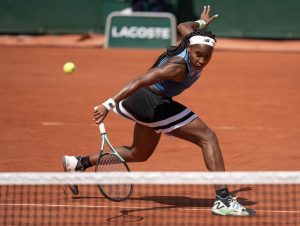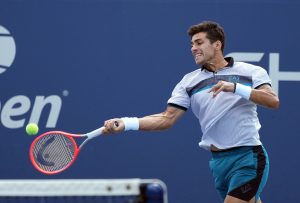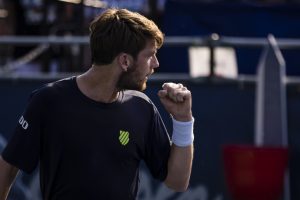Unfortunately, the 2021 Australian Open threatens to be the most memorable of all Australian Opens, because it is still possible that it might not take place or that it begins and then has to be cancelled, because of the Coronavirus outbreak that forced the suspension of all the warm-up events in Melbourne this week. If that is the case, then unfortunately it will be remembered for all the wrong reasons.
For the moment, though, the tournament is going ahead, with Craig Tiley, the chief executive of Tennis Australia, declaring that he is “absolutely confident” that it will take place as scheduled. So, ahead of the start of the 2021 edition, here is a look back at the five most memorable Australian Opens of the Open Era (so, since 1968, when tennis finally went fully and openly professional), which range from the very first Australian Open in 1969 to one of much more recent vintage.
The Five Most Memorable Australian Opens of the Open Era
1969: Rod Laver takes his first step towards winning a second grand slam
Until he lost in the 2019 French Open semi-final against Dominic Thiem, Novak Djokovic had been on course to win a second “Nole Slam” – that is, holding all four Major titles simultaneously – having first achieved that remarkable feat in the summer of 2016, when he won the French Open for the first (and so far only) time.
Nevertheless, despite his achieving something that neither of his two great rivals, Roger Federer and Rafael Nadal, have ever achieved, Djokovic’s “Nole Slam” must be put in its true historical context. That is because one man, Rod Laver, has won an actual Grand Slam – the calendar Grand Slam of winning all four Majors in the same year – twice, first as an amateur in 1962 and then, after his long exile from the Majors for turning professional, as a professional in 1969.
Laver took his first step towards that remarkable second Grand Slam on home soil in Melbourne in January 1969, when he won the Australian Open for the third and final time in his career. That year probably marked the historic high-water mark for Australian tennis, especially on the men’s side, as no fewer than six of the eight quarterfinalists were Australian; indeed, those six constituted the line-ups for three of the four quarterfinals.
At that time, as was the case for most of the 20th century, not all of the world’s top players travelled to Australia for the Australian Open, such that it was the “Junior” member of the Majors club for a long time. Nevertheless, it was still a remarkable testament to the depth and quality of Australian men’s tennis that Laver would beat two of his countrymen, Fred Stolle and Tony Roche, in the quarter-final and semi-final respectively, before he comfortably defeated Spain’s Andrés Gimeno in straight sets in the final.
1973: Margaret Court beats Evonne Goolagong in an all-Australian women’s final
It was not just on the men’s side that Australian Opens often produced all-Australian matchups in the past. Indeed, one of the most famous all-Australian contests in Melbourne was the women’s singles final of 1973, when Margaret Court defeated Evonne Goolagong. The match was close but not a classic, as Court won in straight sets, 6–4 7–5. However, what was fascinating was that it was effectively a clash between the “Old Australia” of Court, the older white conservative (then and now), and the “New Australia” of Goolagong, the much younger Aboriginal Australian.
Goolagong may have lost that battle, but it is arguable that she ended up winning the war against Court. First of all, after her defeat in the 1973 final, she won four of the next five Australian Open women’s singles titles. But even more importantly, she eventually replaced Court as the face not just of Australian tennis but perhaps of Australia as a whole. Fascinatingly, that “culture war”, for want of a better term, still rages today, with growing calls for the “Margaret Court Arena” to be renamed because of the supposedly ultra-Christian Court’s continuing hostility towards the LGBTQ community.
And if it is eventually renamed, then the favourite new name to replace it among most Australians would be the “Evonne Goolagong Arena”. That would be a recognition both of Goolagong’s own extraordinary journey to becoming a Major champion and of Australia’s increasing readiness to face the undeniable truth that it existed long before English sailors and convicts arrived at the end of the 18th century.
1988: Mats Wilander defeats Pat Cash in a classic five-set men’s singles final
The 1969 and 1973 Australian Opens deserve to be remembered as the swansongs of the greatest Australian male tennis player and the greatest Australian female tennis player respectively. However, the 1988 Australian Open deserves to be remembered not for such sentimental reasons but simply for the classic contest in the men’s singles final. Sweden’s Mats Wilander eventually defeated the home favourite and defending Wimbledon Champion, Pat Cash, in five sets, 6–3 6–7(3–7) 3–6 6–1 8–6, in one of the greatest ever Australian Finals of either the pre-Open Era or the Open Era.
Mats Wilander is perhaps the forgotten champion of the 1980s, as he is so often overshadowed by the great Borg-McEnroe-Connors “trivalry” of the first part of the decade and Ivan Lendl’s dominance at the end of it, a dominance that was only really challenged at Wimbledon by Boris Becker and Stefan Edberg. Nevertheless, Wilander won seven Major titles: three Australian Opens; three French Opens; and one US Open. It was only at Wimbledon, where the fast grass did not suit his baseline-hugging game, that he faltered, only ever making the quarterfinals three times, and going no further.
1988 was undoubtedly Wilander’s annus mirabilis, as he won three of the year’s four Majors (once again only losing out at Wimbledon), and it all began in Melbourne in January, when he somehow held off Cash’s seemingly inexhaustible attacks. In particular, the fifth and final set was magnificent. Without a fifth-set tie-break to stop the action, as would be the case now, it continued until Wilander finally broke Cash to win his third and final Australian Open title.
2012: Novak Djokovic and Rafael Nadal contest the greatest ever Australian open men’s final
The era of “The Big Three” – Federer, Nadal and Djokovic – may already be coming to an end. Indeed, with Federer’s continuing injury troubles meaning that he will miss this year’s Australian Open, we may have already entered the era of “The Big Two”. But even if, as is still likely, Nadal and Djokovic contest yet more Major Finals, it is surely impossible that they will ever reproduce the truly epic quality of the 2012 Australian Open men’s singles final.
An epic match produces epic statistics and the 2012 Australian men’s final probably has the most epic statistics of any tennis match ever – yep, even more than the 2008 Wimbledon final between Federer and Nadal, which is undoubtedly the greatest grass-court match ever played but may just be shaded overall by the 2012 final at Melbourne Park. Djokovic eventually won in five of the hardest-fought sets ever played, 5–7 6–4 6–2 6–7(5–7) 7–5, and it lasted for nearly six hours (5 hours and 53 minutes, to be exact), which made it not only the longest match in Australian Open history but the longest Major final in the Open Era.
Thankfully, the match also proved that even the great Billie Jean King can occasionally get things wrong. A few years ago, as part of the seemingly endless discussion about whether the men’s Majors should switch to having three-set matches rather than five-set matches, she said that she was absolutely sure that the 2012 classic between Nadal and Djokovic would cost both men “at least a year” of their career.
Well, nearly a decade on, with the two men the top two seeds for the 2021 Australian Open, there is absolutely no evidence of that being the case. Indeed, the reverse might even be argued, namely that it is precisely because both men, along with Federer, drive each other on to ever more astonishing feats that they are still playing at all. If they had not faced such astonishing competition throughout their career, they might have retired a long time ago, having no new worlds left to conquer.
2017: Federer and the Williams sisters turn back time
Such has been Novak Djokovic’s dominance (or “Djominance”) at the Australian Open, effectively making it his own as Nadal has made Roland Garros his own and as Federer dominated Wimbledon in the noughties, that there have not been many great men’s singles Finals since his masterpiece with Nadal in 2012.
There have been some great women’s singles finals, notably the clash between Caroline Wozniacki and Simona Halep in 2018, in heat so searing that Halep had to be hospitalised afterwards for dehydration and exhaustion. However, in 2017 Roger Federer and the Williams sisters seemed to achieve the impossible – turning back time, so that 2017 briefly felt like 2007, when all three were arguably at their absolute peak.
In the women’s singles final, Serena and Venus Williams faced each other in a Major final for what will almost certainly be the last time. The match itself was not particularly memorable, as Serena won in straight sets, 6–4 6–4. Nevertheless, it was a reminder of the near stranglehold that the two siblings have held over women’s tennis throughout their careers. Ironically, therefore, the match may also just have marked the end of their dominance, as Williams, who was already pregnant when she won in Melbourne in 2017, has not won a Major since, despite appearing in several finals.
However, the delayed start to the 2021 Australian Open, due to Coronavirus and in particular the very strict quarantine that Australia has imposed on any incomers to the country, has given Serena extra time to recover from injury struggles. That may just be enough to propel her to a 24th Major title, thus bringing her level with Margaret Court in the all-time list of winningest women in Majors.
By contrast with the women’s singles final, the 2017 men’s singles final was a classic, as Federer defeated Rafael Nadal in five sets, 6–4 3–6 6–1 3–6 6–3. It was yet another instalment in the remarkable “trivalry” between Federer, Nadal and Djokovic, which is surely now the greatest in sport bar none, even surpassing the great golfing “trivalry” of Palmer, Nicklaus and Player in the 1960s and that of Ali, Frazier and Foreman in heavyweight boxing in the 1970s.
And for once in recent years – indeed, for the first time in nearly a decade – Federer won one of those “Grand Finals”, coming from 3-1 down in the fifth set to dazzle Nadal and the watching world by winning five games in a row with some of the most sumptuous tennis ever played. If we see anything similar in Melbourne in 2021 (although in Federer’s absence from this year’s tournament, it is hard to see how that is possible), then this year’s Australian Open will eventually go down as one of the most memorable of all Australian Opens, and for the right reasons rather than the wrong ones.
Main photo:
Embed from Getty Images






